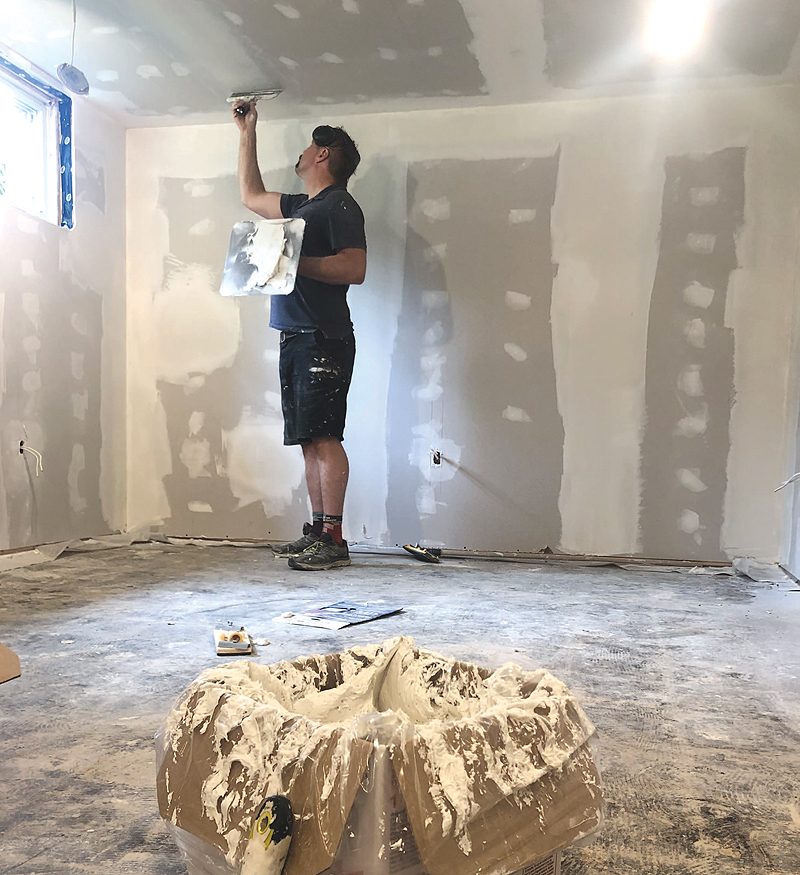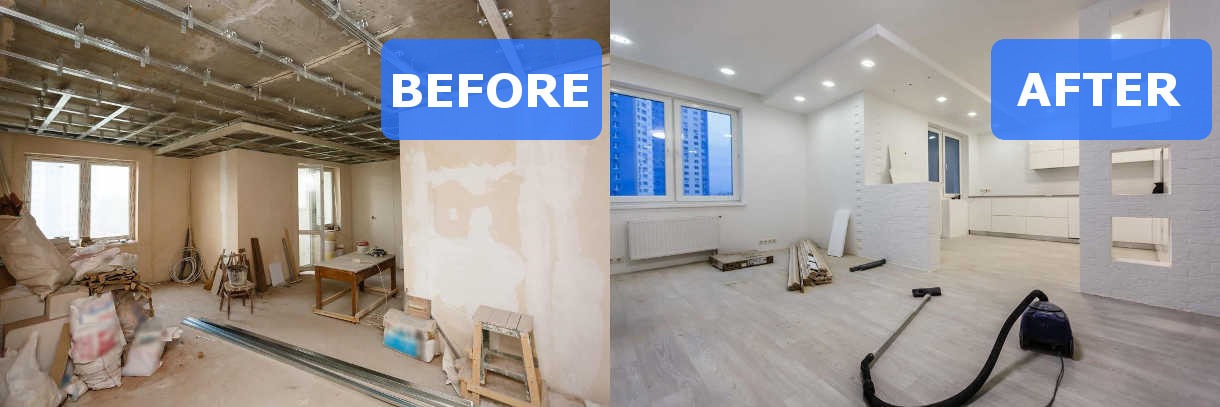Choosing the Right Drywall Contractors for Your Task
Wiki Article
Whatever You Need to Learn About Drywall Installation: A Comprehensive Overview

Recognizing Drywall Fundamentals
Understanding the basics of drywall is essential for any kind of effective installation job. Drywall, additionally referred to as plaster board or plasterboard, is a preferred building material used to produce indoor wall surfaces and ceilings. It includes a plaster core sandwiched between two layers of paper. The plaster core gives the necessary stamina and strength, while the paper layers secure the core from damage and offer a smooth surface for finishing.
One important facet of understanding drywall is understanding the various kinds available. One of the most common kinds consist of regular drywall, moisture-resistant drywall, and fire-resistant drywall. Routine drywall is appropriate for the majority of indoor applications, while moisture-resistant drywall is suggested for areas with high humidity, such as bathrooms and cooking areas. Fireproof drywall is created to offer additional protection versus fire and is often needed in business structures and multi-family homes.
One more secret facet of drywall basics is understanding the standard sizes and thicknesses available. One of the most typical sizes are 4x8 feet and 4x12 feet, with densities ranging from 1/4 inch to 5/8 inch. Thicker drywall is usually used for applications that call for boosted fire resistance or soundproofing.
Devices and Materials Needed for Drywall Setup
To effectively set up drywall, it is critical to have the necessary devices and materials accessible (drywall contractors). These products and devices are crucial for attaining a specialist finish and making sure the longevity of the installmentPrimarily, you will require a gauging tape to precisely measure the measurements of the area where the drywall will be installed. An utility knife is vital for cutting the drywall to the required size and shape. Furthermore, a drywall saw can be used for making much more complex cuts, such as around electrical outlets or home windows.
Next, you will certainly need a screw weapon or a drill with a screwdriver bit to safeguard the drywall to the wall surface studs. Screws, especially drywall screws, are needed for affixing the drywall to the studs. It is essential to make use of the appropriate length of screws to make sure a flush and secure installation.

In terms of materials, you will require the drywall itself, joint compound for completing voids and joints, and tape for strengthening the joints. Sandpaper or a fining sand block will be required for smoothing out the joint substance after it has dried.
Preparing the Space for Drywall Setup
Prior to waging the drywall setup, it is necessary to correctly prepare the space to make sure a successful and smooth installation procedure. Preparing the space involves several essential steps that need to be followed faithfully.To start with, it is critical to get rid of the location of any kind of furnishings, fixtures, or other items that might obstruct the installment process. This will supply the installers with enough area to function and navigate around. Additionally, her response it is a good idea to cover the floorings and any type of continuing to be products with protective sheets or ground cloth to avoid any type of damages or debris from dropping onto them.
Following, it is essential to inspect the wall surfaces and ceiling for any existing damage, such as cracks, openings, or water discolorations. These problems need to be fixed prior to the setup to guarantee a smooth and even surface for the drywall. Any kind of loose paint or wallpaper ought to also be removed, and the walls need to be completely cleaned and cleaned.
Moreover, electric and plumbing components should be shut down and safeguarded to stop any kind of mishaps or damage throughout the setup procedure. It is crucial to shut off the power supply to the location and remove any kind of electrical cover plates prior to beginning the setup.
Lastly, useful content it is a good idea to seek advice from an expert or describe neighborhood building ordinance to guarantee conformity with safety laws and obtain any kind of needed licenses prior to waging the installation. By effectively preparing the area, you can make certain a reliable and effective drywall installation procedure.
Step-by-Step Overview to Hanging Drywall
To make sure a successful drywall installation, it is vital to follow a detailed overview for hanging the drywall (drywall repair). This procedure requires precision and focus to informationFirst, gather all the essential tools and products, including drywall sheets, an utility blade, a drywall saw, a measuring tape, a drill, and screws.
Following, begin by measuring the measurements of the wall or ceiling where the drywall will be mounted. Transfer these dimensions onto the drywall sheets, noting where cuts need to be made - Edmonton drywallers. Utilize a straight side and an energy blade to score the drywall along the marked lines, then break it along the score line
When the drywall sheets are reduced to dimension, they can be hung on the wall or ceiling. Begin at one corner and position the very first sheet vertically against the framework. Use screws to safeguard the drywall to the studs, making sure to leave a small gap between sheets for growth.
Continue this process, working your means throughout the wall or ceiling. Make sure that each sheet is level and flush with adjacent sheets. Utilize directory a drywall attended remove any essential openings for electrical outlets or switches.
Finishing Methods for a Professional Appearance
Currently that the drywall sheets have actually been effectively hung, it is important to use finishing methods that will result in a specialist and sleek look. Attaining a flawless and smooth coating on drywall needs careful attention to detail and the usage of proper tools and techniques. Among the initial steps in the completing procedure is to load the joints and screw impressions with joint substance. This can be done by using a slim layer of substance over the joints making use of a taping knife, and afterwards installing drywall tape into the compound. As soon as the tape remains in area, one more layer of substance should be applied over it, feathering the sides to produce a smooth transition. After the compound has dried, it is necessary to sand the surface area to get rid of any kind of imperfections and develop a seamless finish. A post sander or fining sand block can be utilized for this function. The walls should be primed and repainted to complete the ending up process. Making use of premium paint and using it evenly with a roller or brush will certainly make certain a durable and expert coating. By following these completing strategies, your drywall installment will have a polished and expert appearance.Conclusion
Finally, understanding the fundamentals of drywall installation is necessary for an effective job. By utilizing the appropriate devices and products, preparing the area sufficiently, and adhering to a detailed guide, one can attain a professional-looking coating. Attention to finishing methods will certainly even more improve the general appearance. With this comprehensive guide, any person can confidently take on a drywall setup task.The most usual kinds include routine drywall, moisture-resistant drywall, and fire-resistant drywall. Routine drywall is suitable for the majority of interior applications, while moisture-resistant drywall is recommended for locations with high humidity, such as washrooms and kitchen areas. Screws, especially drywall screws, are needed for affixing the drywall to the studs. These issues need to be fixed before the installment to ensure a smooth and even surface for the drywall. By following these finishing techniques, your drywall installment will have a professional and polished appearance.
Report this wiki page